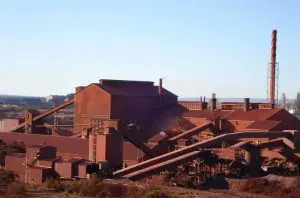Hydrogen as an energy source for sustainable transport has great potential, but for use in the transport industry there is one big problem: the highly flammable gas in its pure form must be compressed and stored safely in order to be transported for use as a fuel.
Today, a breakthrough method developed by the CSIRO to transport hydrogen safely in the form of ammonia was tested in Pullenvale, Brisbane.
CSIRO Chief Executive Larry Marshall was one of the first to take a ride in the vehicles supplied by Toyota and Hyundai, both automakers who have invested considerable time and money in the development of fuel cell technology for cars.
CSIRO principal research scientist Michael Dolan said it was the first time, worldwide, that a hydrogen car had been powered by hydrogen derived from ammonia.
“It’s an important link in the hydrogen value chain that we think we’ve solved, so that will enable something much bigger,” Dolan told RE.
“We are effectively undoing the Haber-Bosch process [which has traditionally been used to transform hydrogen into ammonia], starting with hydrogen from a source, where you take nitrogen out of the air and make ammonia, which we think helps transport hydrogen over long distances and long time scales.”
“We extract hydrogen out of ammonia, and using our membrane we can extract it,” Dolan continues, explaining that as the process is a chemical one that can be fuelled by renewable electricity, it is considered a low-emissions process.

Ammonia stores almost twice as much energy than liquid hydrogen and is easier to ship and distribute, opening up possibilities for an export market.
Marshall says it’s a great opportunity for Australia.
“This is a watershed moment for energy,“ he says. “We look forward to applying CSIRO innovation to enable this exciting renewably-sourced fuel and energy storage medium a smoother path to market.”
The project was supported by BOC which is a member of The Linde Group, one of the world’s largest gas and engineering companies.
Their contribution to the $3.4 million project included over $100,000 in-kind gas products and equipment as well as technical expertise.
BOC Sales and Marketing Director Bruce Currie expressed their congratulations to the CSIRO team, saying, “BOC’s innovative engineering team are proud to be collaborating with CSIRO researchers on this technology breakthrough, as we focus on advancing the hydrogen economy and global transition towards clean hydrogen for mobility and energy.”








